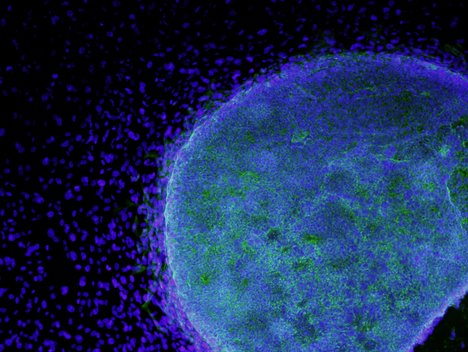California's stem cell research agency faces strong criticism

In what was seen by many as a rebuke of the Bush Administration's ban on federal funding for embryonic stem cell research, California voters passed Proposition 71 in 2004 - a move that authorized the state to issue $3 bllion in state bonds to fund embryonic stem cell research.
The campaign was led by Silicon Valley millionaire Robert Klein whose son had been diagnosed with juvenile diabetes. To jump start the effort, $271 million in seed money was used to launch the California Institute for Regenerative Medicine (CIRM). Robert Klein was appointed its chair, accompanied by a 29- member board. To date, CIRM has given $1.1 billion to California researchers and institutions. However, while embryonic stem cell research is seen as showing promise to help cure debilitating diseases, CIRM has been mired in criticism from consumer and government agency watchdog groups as well as the California legislature for conflicts of interests, a lack of transparency, a lack of progress and high salaries.
Currently fueling heightened scrutiny are reports that Klein, who is stepping down in December, plans to launch a second inititative seeking additonal taxpayer dollars from Californians in 2012. Conflicts of interest and lack of transparency have plagued CIRM since its inception. Of the $1.1 billion that CIRM has committed, $930 million has gone to institutions with faculty or administrators on the board. For example, Stanford, UCLA and UCSF have received the largest three grants, receiving $176 million, $135 million and $111 million respectfully. All three institutions have representation on the board.
CIRM does not allow institutions that have a grant in play to vote on their institution's application, but that is not seen as enough of a check-and-balance. In fact, a report released in 2009 by the Little Hoover Commission, a state panel charged with transparency and accountability, recommended that CIRM reduce the number of its board so that the trememdous amount of money going to is board members' institutions would not look so awkward, claiming that it "undermines the legitimacy of the agency." The report also recommended more oversight, disclosure of the votes of board members on grants, and greater transparency.
Salary levels have also raised eyebrows, particularly for a state agency. In 2009, President Alan Trouson was paid $490,000, the second highest state salary, to oversee a staff of just 50 people. Compare that to Governor Schwarzenegger who earns just $174,000 annually and is charged with oversight of 200,000 employees. CIRM also hired former State Senator Art Torres as vice-chair of the board for $225,000 a year. Klein disagrees with the criticism, arguing that to find the strongest researchers, they must be paid well.
However, the apparent lack of progress is likely the most frustating for many. Six years ago, the campaign promised cures. To date, CIRM has only published research, none of which was part of the two clinical trials just approved by the Obama Administration - Advance Cell Technology of Santa Monica and Geron Corp of Menlo Park (though CIRM claims it played a role). While medical research is painstakingly slow, the campaign's promises and CIRM's lack to transparency have not helped make its case. California voters supported Prop 71 because they wanted science to trump politics. Now, with Klein stepping down and more recommendations published, CIRM has been given an opportunity to position itself as a more transparent and effective organization. Let's hope they take it.



